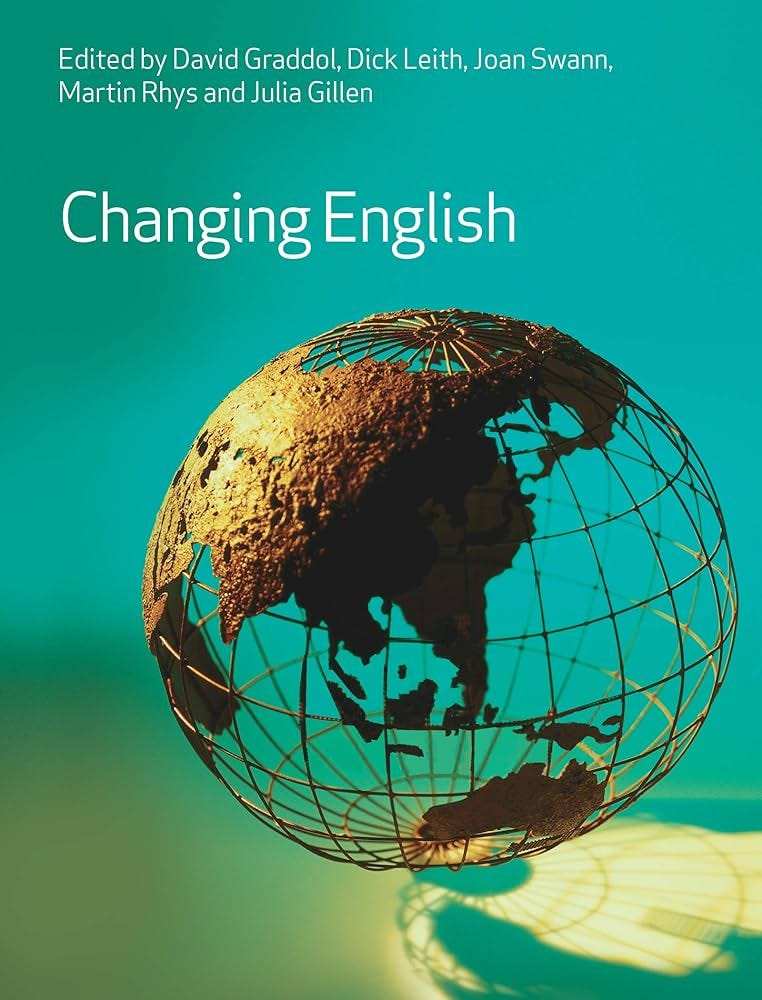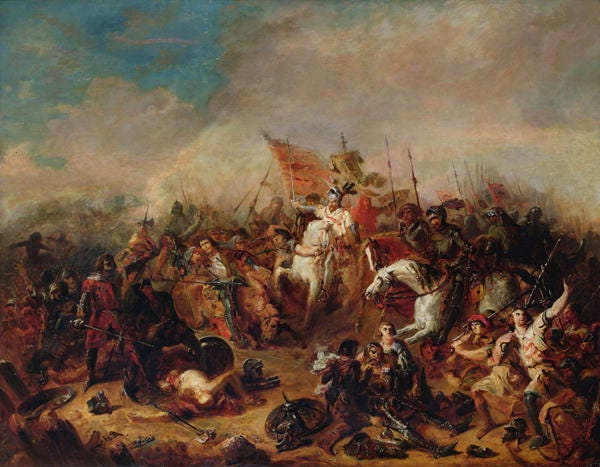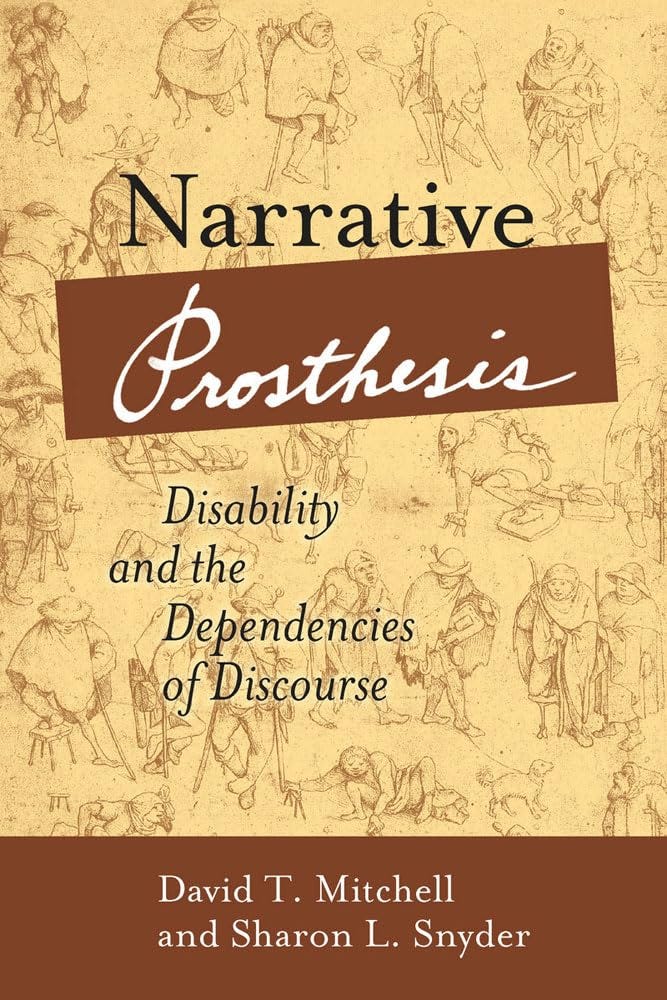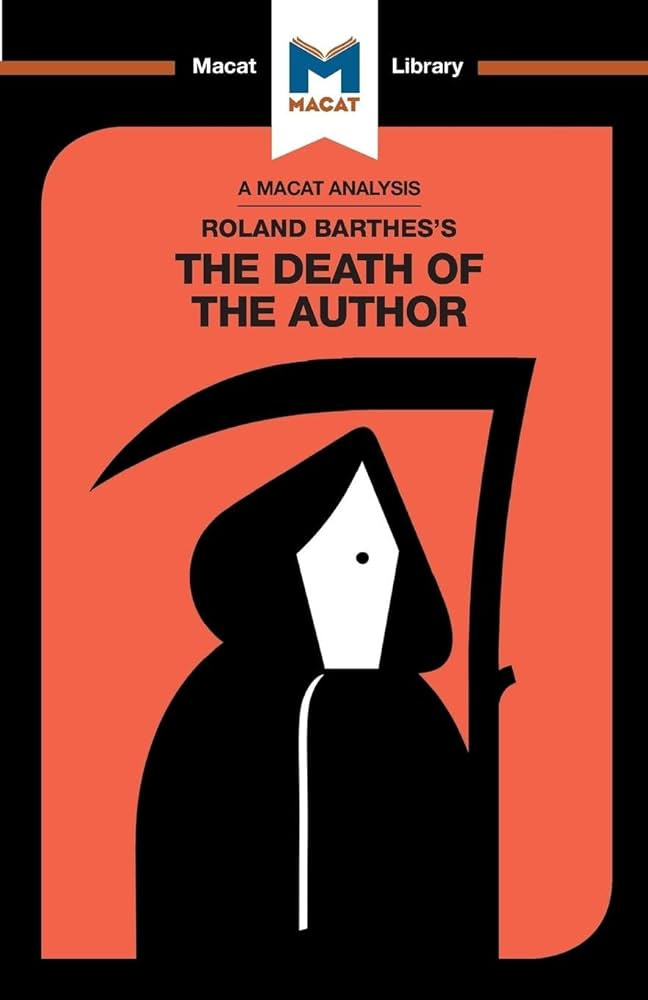For the Love of Learning: Academic Reads That Are Actually Worth Your Time (Part I)
Nerdy, necessary, and mostly not boring
In my current read, Far From the Madding Crowd, Thomas Hardy writes:
“It may have been observed that there is no regular path for getting out of love as there is for getting in.”
This came in the context of Farmer Oak’s early infatuation with the alluring Bathsheba Everdene. While Hardy may have intended this quote to describe love between people, I’d like to apply it to a person's love for learning.
It’s been eight months since I graduated with a degree in English literature, but my academic spirit is still very much alive. It’s as though I never left the classroom; I often revisit my most enjoyed lectures, and scour the Internet to add further insight into what I already know. I like to open and read papers I’ve written, dwelling on the positive comments professors left me to relive some of that validation.
Whether you’re in or out of school, there remains a special thrill to the act of learning something new. In a way, learning can become an addiction; it conditions your brain to love being challenged, to crave that feeling of ecstasy and gratification it gets when an idea clarifies in your head. And when you constantly satisfy that craving, you become a lifelong learner. A regular scout for knowledge.
That’s an addiction to celebrate.
As a tribute to my BA days, and to share my lifelong learning journey with my little audience, I’ve decided to start this series. I’ll be recommending academic books, essays, and articles that have stuck with me, giving each a short review and explaining why they are worth your time.
But before I begin, I’d like to point out that even if these recommendations don’t interest you as a learner, some of them will surely benefit you as a reader and writer—particularly if you write fiction. Having some knowledge of literary trends and theory can open your mind up to different methods of characterization, representation, and plot structuring, depending on the overall purpose your story hopes to achieve.
As someone who reads mostly fiction, I’ve found that academic readings have changed the way I engage with stories. I’ve gone from being a passive reader to one who critically interacts with the plot. And that’s not a negative thing; if anything, it has improved my enjoyment of literature, because I’ve been taught the different ways I can dissect and understand a piece of text, the nuances in each line and action, and their possible implications—the good and bad. It has helped me better appreciate and admire the works of certain authors, how their minds have ingeniously managed to create tales that resonate so strongly with particular social and human causes.
But enough of my rambling. Below is the very first part of this series!
Books
1. Changing English
Edited by David Graddol, Dick Leith, Joan Swann, Martin Rhys and Julia Gillen
Field: Linguistics and History
I read selected chapters of this textbook for a linguistics class called Language and Change—an introductory course on the past, present, and future of the English language. But after completing just the first two, I knew I’d be reading the entire 300-page book on my own later.
Here’s why:
Accessibility: you don’t have to have any background in linguistics to understand this book. The authors communicate in everyday language, refraining from the use of convoluted structures we often see in academic texts (if I’m being honest, many sources I was forced to read for college felt like an endless yapping by obnoxious scholars flaunting that they know big words and have big brains). But here, jargon is used only where necessary, and defined with simple explanations. Reading it is a breeze and requires as much effort one would put into reading a regular nonfiction bestseller.
A wide variety of topics, told chronologically: the first chapter poses a question that’ll make you reconsider everything you know about spoken and written English. The question—“What counts as English?”—addresses the sheer variety of dialects and accents you may or may not have heard of, makes you wonder about the “validity” of some of them, pushing you to ask if some accents are considered “more correct” than others.
To answer your questions, the authors take you on a mental expedition through time and place. You’ll begin in fifth century AD England, after the Anglo-Saxon invasions, where English made its first appearance. You’ll learn about the Christianization of the country, the Viking invasions—about every historical event that has in one way or another affected the development of the English language up until the modern day.
My personal favorite topics explored in the book include (but are not limited to):
The Norman conquest. After defeating the Anglo-Saxons in the 1066 Battle of Hastings, the Norman French introduced their language officially into the country—an event that has significantly influenced English. Several words we use everyday, like castle, beef, and village were all derived from French because of this historical event.
The printing press and its influence on spelling. Did you know that, prior to the invention of printing, there used to be multiple ways to spell a single word—and all of them were legitimate? That’s because England was (and still is), a smorgasbord of regional dialects, and speakers of different dialects pronounced and hence spelled the same words differently. For example, eggs was egges for some and eyren for others, and these people could not understand each other. When printing became possible—and because it was to enable the mass distribution of written material in the country and beyond—they had to choose a single dialect as the standard to achieve some uniformity, and so that everyone could understand everyone else at least in writing. The book’s discussion of this issue is very engaging.
Colonial days and their impact on language. Here the book widens its scope to feature examples of how colonial languages such as Spanish, Portuguese, French, and Dutch have infiltrated the English language and modified certain aspects in grammar, spelling, and pronunciation, while simultaneously shifting social and political dynamics.
Intertextuality: the authors make direct references to many literary works, such as Beowulf, a number of Shakespeare’s plays, and Alice’s Adventures in Wonderland to chronologically illustrate the changes English has experienced through time. They also provide passages by some of the giants in linguistics, like Noam Chomsky and David Crystal, to elaborate on various topics.
Puzzle-like exercises: in every chapter, there are a number of exercises you can solve. Some of them—like the one where you have to decipher a text written in Old English—feel like working on a puzzle and are a great way to remain entertained while you learn.
There are more reasons to like this book, but I’ll end my discussion here. The takeaway is: if you’ve ever been curious to know how and why the English language has become what it is today, and what more changes it can possibly experience in the future, then you’ve got to give this textbook a chance.
2. Narrative Prosthesis: Disability and the Dependencies of Discourse
Written by David Mitchell and Sharon Snyder
Fields: Literary Theory, Disability Studies, Cultural Studies
My BA thesis dealt with literary representations of intellectual disability, and for two whole semesters prior to writing it, I had to learn everything I could on disability in literature. This was one of the first sources I discovered in the library.
If you’re a writer who has or is considering creating characters with certain disabilities, you may find yourself wondering things like:
Did I get this right about how it is to live with a disability?
Am I being insensitive toward the disabled community with this kind of representation?
What am I doing wrong and how can I improve my work?
This book won’t give you all the answers, but it has enough to give you a basic understanding of disability and the ethical ways to depict it in fiction.
But even if you’re not a writer, and just someone who’s interested in becoming a more critical and observant reader, or someone who just wants an introduction to the fascinating field of disability studies, this book is worth trying.
Mitchell and Snyder start by explaining what they mean by the term narrative prosthesis; like the physical prosthesis that helps someone walk and move, disability is often wrongly used as a narrative device with the sole purpose of propelling the plot forward.
Because disability can exist in a story as something out of the ordinary, as something curious, writers choose to exploit it for narration—to make the plot more interesting, more tragic, more hooking. Mitchell and Snyder comment on that by saying, “Disability is routinely used to inaugurate the act of storytelling itself: it is the agent that causes the story to be told.”
From this they proceed by criticizing past and contemporary trends in disability representation, namely how disability has been:
used as a metaphor for broader moral, philosophical, or social dilemmas (think of how Lennie from Steinbeck’s Of Mice and Men acts as a symbol of the harsh realities imposed by the American Dream).
presented as something deplorable, such that characters with disabilities have one of two acceptable fates: to be “cured” or to die/be eliminated (I won’t give an example here because I don’t want to spoil any book :D).
used as an object of pity or inspiration for non-disabled characters (often the protagonists), reinforcing what is known as the supercrip trope—disabled characters who have miraculously overcome the difficulties imposed by their condition, achieved something admirable, and become symbols of resilience and saintly patience (think of Forrest Gump, for instance, whose success in several fields is portrayed as something miraculous).
…among many other harmful stereotypes.
After providing several examples and going in-depth into their critical analysis, the authors move on to explain what an authentic and acceptable representation of disability would be: one that depicts disabled characters as people with full personal agency, exploring the nuanced complexities of a life affected by disability, while moving away from the “cure or death” narrative model—one where disability is used not as a structural tool but as a reflection of a very real and complete human experience.
The good thing about this book, too, is that it’s written in simple and accessible language, addressing the general reader more than the experienced scholar. It’s eye-opening, educational, and beautiful in the way it advocates for ethical, authentic, and equitable representation for all.
Essays
1. In Praise of Idleness
Written by Bertrand Russell
Fields: Philosophy, Political and Economic Theory
I’ve been seeing a lot of content on Substack about the need to lead slower lives, to achieve better work-life balance, and recognize the inherent value of rest. If you’re someone who creates this kind of content, or if you’re a believer in the destructiveness of this fast-paced, super demanding life, then this essay is for you.
Russell was a 20th century philosopher and logician, but what he wrote in In Praise of Idleness addresses a problem many us 21st century folk seem to be facing: a relentless obsession with productivity.
Let’s be honest: this productivity talk is everywhere—on social media, even here on Substack, in self-help books, in daily conversation. We live as though we’re always competing with each other to see who’s more productive by the end of the day, who’s worked more hours, who’s more tired. And the worst part is that we tend to romanticize this toxic work culture; how many times have you caught yourself or others saying things like: “I’ll sleep when I’m dead,” and “hustle harder,” and “no pain, no gain”?
Yep.
Everything we do nowadays has to have productive value—has to amount to something: income, reward, or external validation. Even the art we create to let off steam, as a means of self-expression, is monetized when it doesn’t always have to be (the case is different if you create art for a living).
Russell’s main argument is that society ought to have an “organized diminution of work”—that we ought to start working four instead of eight hours. When all basic necessities are obtainable with just four hours of work a day, he says, then those additional four hours are unnecessary, and should be replaced by beneficial leisure and rest.
He acknowledges that there’s always someone who’s going to argue that, if the modern man is given all those extra hours for rest, he wouldn’t know what to do with himself. And it is precisely this that Russell is concerned about: we have forgotten how to rest, how to be idle, how to use our time for personal satisfaction, because we’ve trained our brains and bodies to crave work and the satisfaction they derive from completing a task and seeing its result.
And it’s time we train them to crave leisure too.
One of my favorite quotes from this essay is: “There was formerly a capacity for light-heartedness and play which has been to some extent inhibited by the cult of efficiency. The modern man thinks that everything ought to be done for the sake of something else, and never for its own sake.”
And because we have forgotten how to do things for their own sake, Russell claims that our creativity suffers. Creativity is revitalized, recharged, when we’re not always concerned about producing something in return for something else, when we aren’t mentally and physically exhausted, when we aren’t always thinking of the material value our creativity will have at some point. We should instead focus on the sentimental, on the simple enjoyment we can derive from creating something and sharing it with others.
This essay is a simple read, with simple language, and I recommend it to anyone who’s currently blaming themselves for not being “productive enough”—as a reminder that we ought to live our lives a bit slower and stop giving work exaggerated importance and, as we always do, more importance than leisure.
2. Can the Subaltern Speak?
Written by Gayatri Spivak
Fields: Literary Theory and Cultural Studies
This was the first reading on the syllabus of my postcolonial literature course, and it quickly became one of the class’s most referenced and favorite works.
Spivak, who has been described as an “unsettling voice” in literary studies, writes in this essay about the subaltern. To put it in simple terms, the subaltern is a group in society that is politically, socially, and economically marginalized, to the point that they have no access to any position of authority, and to the point that they cannot speak for themselves—but when they do, their voices are left unheard and ignored, classified as illegitimate by those in power. She uses a particular example throughout the text: that of poor colonized women, i.e. people who are oppressed for their gender, race, and class all at once.
I won’t go into detail, as the arguments she presents can take up hours of discussion, but Spivak insists that the subaltern is always voiceless, can never speak. That even when well-intentioned people or organizations step up to represent them in some way, their true voice is always somehow distorted in the process then ignored by the larger community, particularly by authority figures.
It’s a fascinating piece that draws on Indian cultural traditions as an example, but I have to admit that Spivak’s writing is pretty difficult to read. She spends a good part criticizing some thinkers of the West, such as Michel Foucault, for underestimating the limitations imposed by capitalism and colonialism on the subaltern’s ability to speak for themselves. So, to fully understand her arguments, one ought to have some familiarity with the works of those other philosophers. Adding to the difficulty is the complex, dense academic language Spivak uses, relying on jargon and concepts from fields like feminism and postcolonial theory.
But there are still ways to understand her work. In college, we were provided with some guides that explained the ideas Spivak criticizes in her essay, saving us the time we would have spent researching and learning on our own. I highly recommend reading this foundational and important piece, and I advise that if you do look it up, search for an online guide or accompanying videos so that you’ll properly appreciate Spivak’s ingenious line of thought.
To this day, whenever I read a novel, I ask myself: who’s the subaltern in the story? Do they have a voice, and is that voice being heard? In other words—can the subaltern here speak at all?
And I have found myself noticing more easily the misrepresentation that so often occurs in stories depicting minority groups. The essay has, quite simply, made me a more observant reader.
3. The Death of the Author
Written by Roland Barthes
Fields: Literary Theory
“The birth of the reader must be at the cost of the death of the author.”
I read this essay for a literary theory class, and it changed the way I interpret what I read. Barthes’s main argument is that we ought to separate authors from the writing they produce, and that it is not authors who create meaning—instead, the meaning of a text emerges when someone reads it. He challenges traditional approaches to literary interpretation by being against the notion that we should take the author’s life experiences, psychology, intentions, and historical context into consideration when reading. Doing that, he claims, limits the interpretive possibilities of a text and constrains its meaning within a single, fixed framework.
Meaning should instead be created by the reader. And because not one reader is like the other, this approach opens the door to innumerable interpretations. Since studying this essay in class, I’ve been approaching my personal readings differently; I start a novel without having much information about the author’s life and historical context, interpret it based on my impressions, feelings, and speculations, then compare my understanding to the one the author may have intended after looking up some background information about them. Delving into a story without a clue of what to expect and how it relates to the author’s personal life gives me the opportunity to sit back and reflect, unguided and unrestricted by fixed facts that impose singular meanings to the story.
This is a simple read in terms of language, but it is preferred to have some prior knowledge on literary theory, particularly reader-response theory and poststructuralism.
That’s a wrap on the first part!
As I’ve mentioned before, this series is all about keeping your spirit of curiosity alive. Whether you’re a student, writer, or simply someone who loves engaging with big ideas, the works I’ve shared today—and will be sharing—offer a richer way to understand several fields within the humanities (and society at large).
Reading academically isn’t meant to be tortuous, isn’t meant to be about enduring dry chunks of text; it should be about challenging yourself to see the world through new lenses, to think critically, and to appreciate the complexity of human thought.
I hope this series inspires you to join me on this lifelong learning journey. After all, as Hardy has suggested, once the love for something (and in our case, learning) takes root in your heart, there’s no way out—only forward.
If you liked what you read, consider subscribing so you may continue to receive these recommendations, among other humanities-centered content.
Is there a specific field or area of study in which you’d like me to give recommendations? If yes, drop a comment below!
Until next week,
Heba











Wow wow wow, Heba, this was splendid and very thorough! Some very truly interesting books and essays you mentioned.
Ramadan mubarak. Also I gotta scroll back up cuz you used a really cool word and I need to look it up haha.